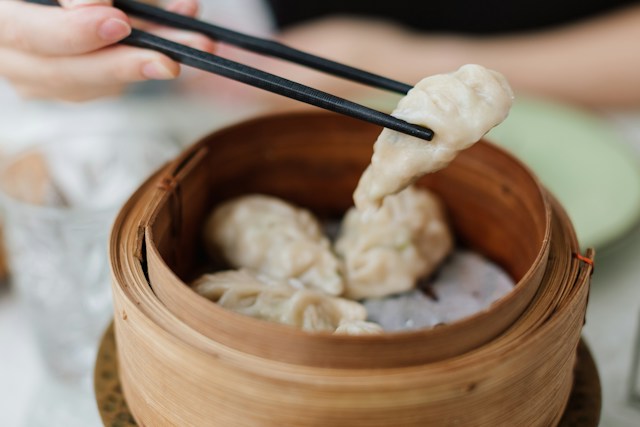Japanese food is celebrated worldwide for its emphasis on fresh, seasonal ingredients, meticulous preparation, and artful presentation. It is renowned for its emphasis on fresh, seasonal ingredients, meticulous preparation, and artful presentation. It offers a diverse range of flavors and textures, combining traditional techniques with modern influences.
Here are some famous Japanese foods that have gained international popularity:
1. Sushi
Sushi is perhaps the most well-known Japanese dish globally. It typically consists of vinegared rice combined with various ingredients, including raw or cooked seafood, vegetables, and seaweed. Popular types include Nigiri, Sashimi, and Maki rolls.
2. Ramen
Ramen is a Japanese noodle soup dish consisting of Chinese-style wheat noodles served in a meat or fish-based broth. It is often topped with ingredients such as sliced pork, seaweed, and green onions.
a. Shoyu Ramen – Ramen noodles served in a soy sauce-based broth, often topped with sliced pork, green onions, seaweed, and a boiled egg.
b. Miso Ramen – Ramen with a broth made from fermented soybean paste (miso), offering a rich and savory flavor.
c. Shio Ramen – Ramen featuring a clear, salt-based broth, often garnished with seaweed, green onions, and seafood or meat.
3. Tempura
Tempura is a dish where seafood or vegetables are coated in a light batter and deep-fried to perfection. The result is a crispy and delicate texture.
4. Sashimi
It is a traditional Japanese dish consisting of thinly sliced raw fish or seafood, often served with soy sauce and wasabi. The word “sashimi” itself means “pierced body” in Japanese, referring to the way the fish is typically sliced and presented. Sashimi showcases the natural flavors and textures of high-quality, fresh ingredients.
5. Teriyaki
Teriyaki is a cooking technique where meat or fish is grilled or broiled and glazed with a sweet and savory soy-based sauce. It has become popular worldwide, and “teriyaki” is often associated with this style of cooking.
6. Okonomiyaki
Okonomiyaki is a savory pancake made with flour, grated yam, shredded cabbage, and various toppings. It is often cooked on a griddle and served with mayonnaise and okonomiyaki sauce.
7. Yakitori
Yakitori refers to skewered and grilled chicken, typically seasoned with tare sauce. The skewers can include different parts of the chicken, such as thighs, wings, and liver.
8. Miso Soup
Miso soup is a traditional Japanese soup made with dashi (fish or seaweed stock) and miso paste. It often contains ingredients like tofu, seaweed, and green onions.
9. Gyoza
Gyoza are Japanese dumplings filled with ground meat (usually pork), vegetables, and seasonings. They are typically pan-fried and served with a dipping sauce.

10. Donburi
Donburi refers to a bowl of rice topped with various ingredients. Some popular variations include Oyakodon (chicken and egg), Katsudon (breaded and fried pork cutlet), and Tekkadon (raw tuna).
a. Katsudon – Breaded and deep-fried pork cutlet (tonkatsu) served over rice with onions, eggs, and a sweet soy-based sauce.
b. Gyudon – Thinly sliced beef simmered in a sweet and savory soy-based broth, served over a bowl of rice.
11. Chawanmushi
Chawanmushi is a savory egg custard dish that usually contains chicken, shrimp, mushrooms, and ginkgo nuts. It is steamed and served in a small bowl.
12. Shabu-Shabu
Shabu-Shabu is a Japanese hot pot dish where thinly sliced meat and vegetables are cooked in a simmering broth. The cooked ingredients are then dipped in a flavorful sauce before eating.
13. Sweets
a. Mochi – Glutinous rice cakes with a chewy texture, often filled with sweetened red bean paste or ice cream.
b. Dorayaki – Pancake-like confections filled with sweet red bean paste.
c. Matcha (Green Tea) Desserts – various desserts, including matcha-flavored ice cream, cakes, and traditional tea ceremonies.
Japanese cuisine encompasses a wide variety of dishes, and this list only scratches the surface of its culinary richness. Whether enjoying sushi, ramen, or traditional Japanese sweets, the focus on quality, freshness, and balance of flavors remains a constant theme.
These dishes represent just a fraction of the rich and diverse world of Japanese cuisine. Each region in Japan has its own specialties, and the country’s culinary heritage continues to captivate food enthusiasts worldwide.









